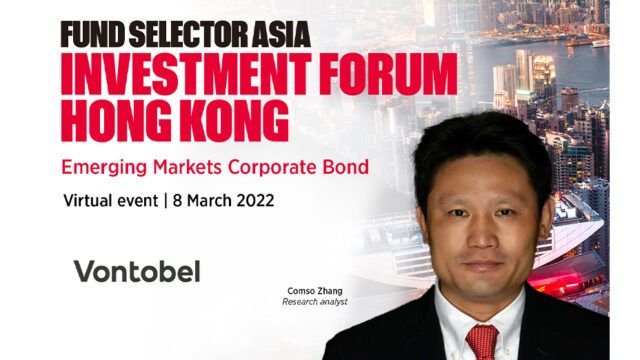What are the attractions of emerging market corporate bonds, and what are their advantages in a rising interest rate environment?
For investors with a medium- to long-term perspective, global-diversified emerging markets (EM) corporate bonds have a clear advantage over developed markets. EM bonds not only give investors significantly higher yields (interest income), but also come at shorter duration, which is attractive in the current rising interest rate environment.
Three major advantages:
- Higher risk-adjusted return, lower correlation with other assets classes – EM corporate bonds offer higher yields due to higher “perceived” risks. However, for deep fundamental-oriented active managers with a disciplined portfolio construction and risk management approaches, this asset class could offer significant alpha.
- Shorter duration – especially appealing amid the current expectation of rapid interest rates hike in the US.
- Diversification benefits – on both the assets side (better bonds selection) and liabilities side (less shock from client redemption). EM corporates offer a diverse investment universe, with attractive companies in various industries from different countries, which helps to diversify risks. Correlation between each sleeve of the portfolio is low, especially for high yield credits. Global EM portfolios also benefit from a global diversified client base, which helps to avoid shock from simultaneous redemptions in the same region, like we witnessed in Asia in the past years.
Which sectors and countries offer the best opportunities, and where is the strategy allocated on the credit rating and duration spectrums?
Firstly, we emphasize that truly global diversified EM portfolios, in terms of both sector and country allocation, offer more attractive risk-adjusted returns versus Asia-concentrated portfolios with inherently higher volatility and cyclicality, particularly across market cycles. On a regional level, we think Latin America is home to attractive opportunities, including selective companies in countries such as Brazil, Chile, Colombia and Mexico. We see 2022 a year for commodity production sectors/regions, underpinned by the soaring commodities prices.
We also see value from the oversold bonds in the Chinese property sector, along with China rates / policy-sensitive credits, such as bank Tier 2 and guarantee-structure bonds issued from Chinese local government financing vehicles (LGFVs). Once supportive policies are implemented, these bonds have potential to outperform in 2022. Companies related to industrial production and fixed investments could also benefit from fiscal stimulus, driving their bonds to perform well.
Currently, we focus on HY bonds with short duration, as well as some longer-dated bonds with conviction of spreads-tightening, to withstand the current market turmoil.
What are the expected returns and what are the biggest risks for the strategy?
Diverging inflationary prospects between China and the US, combined with volatile commodity prices, geopolitical tensions in APAC and Europe (especially after Russia’s invasion of Ukraine), and continuing supply chain challenges are the main risks we are facing this year and investors should expect much more market volatility than previous years.
We believe that volatility will be the name of the game in 2022 and credit selection will be key. Therefore, it has become ever more important for investors to diversify their allocation into global markets versus an Asia-concentrated portfolio. In a year where benchmark beta returns may be disappointing, we think that an active approach will be essential for investors to generate extra returns.
The Fund Selector Asia Investment Forum Hong Kong was held virtually on 8 March 2022 and was sponsored by HSBC Asset Management, Jupiter Asset management, Nuveen and Vontobel Asset Management.
Find out more about what was discussed and the strategies that were presented here: https://fundselectorasia.com/events/fsa-investment-hong-kong/

















